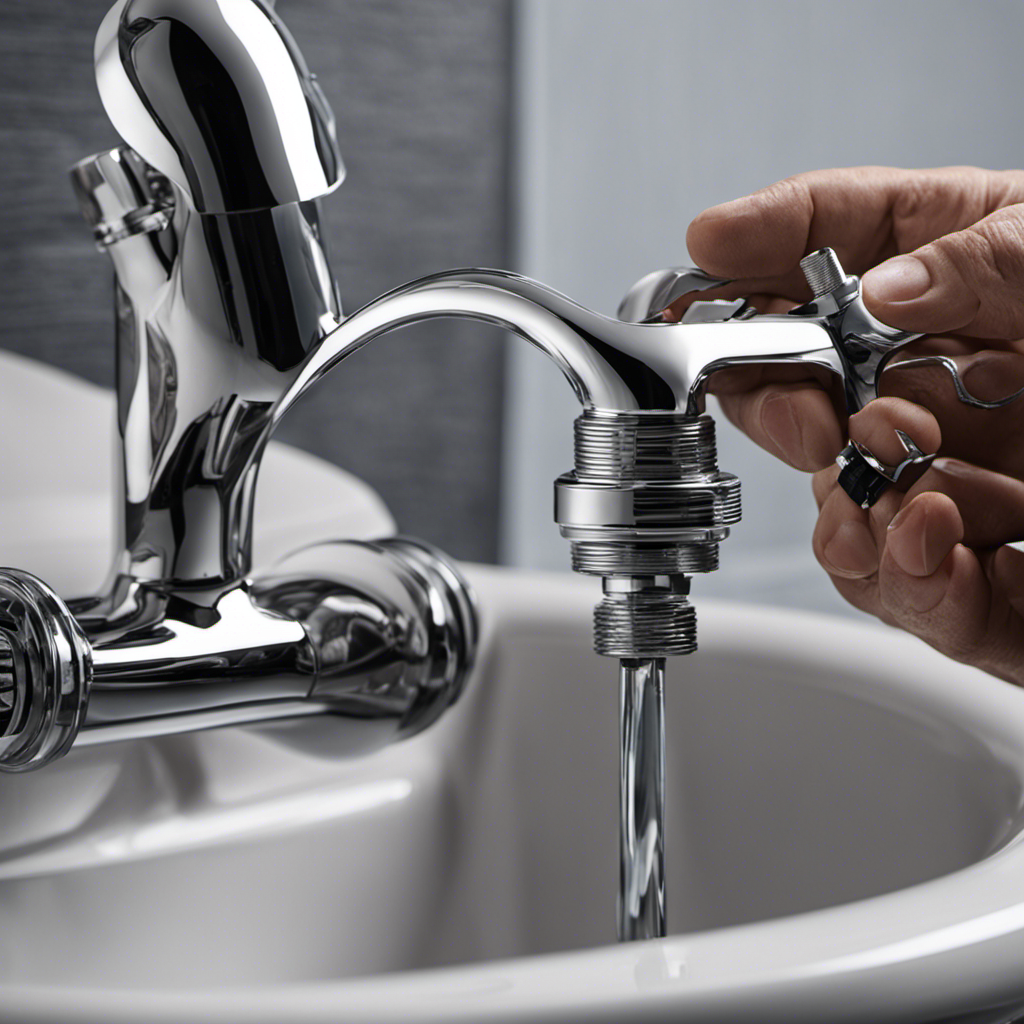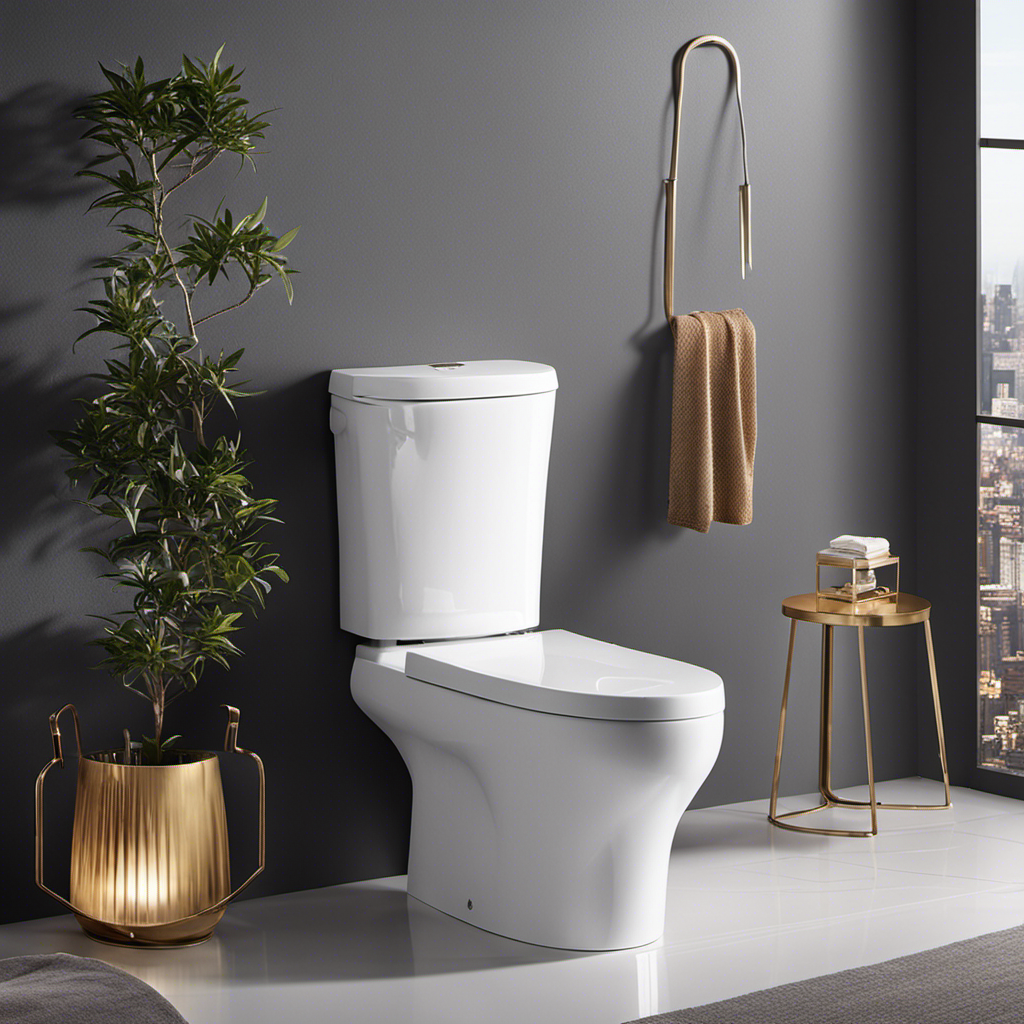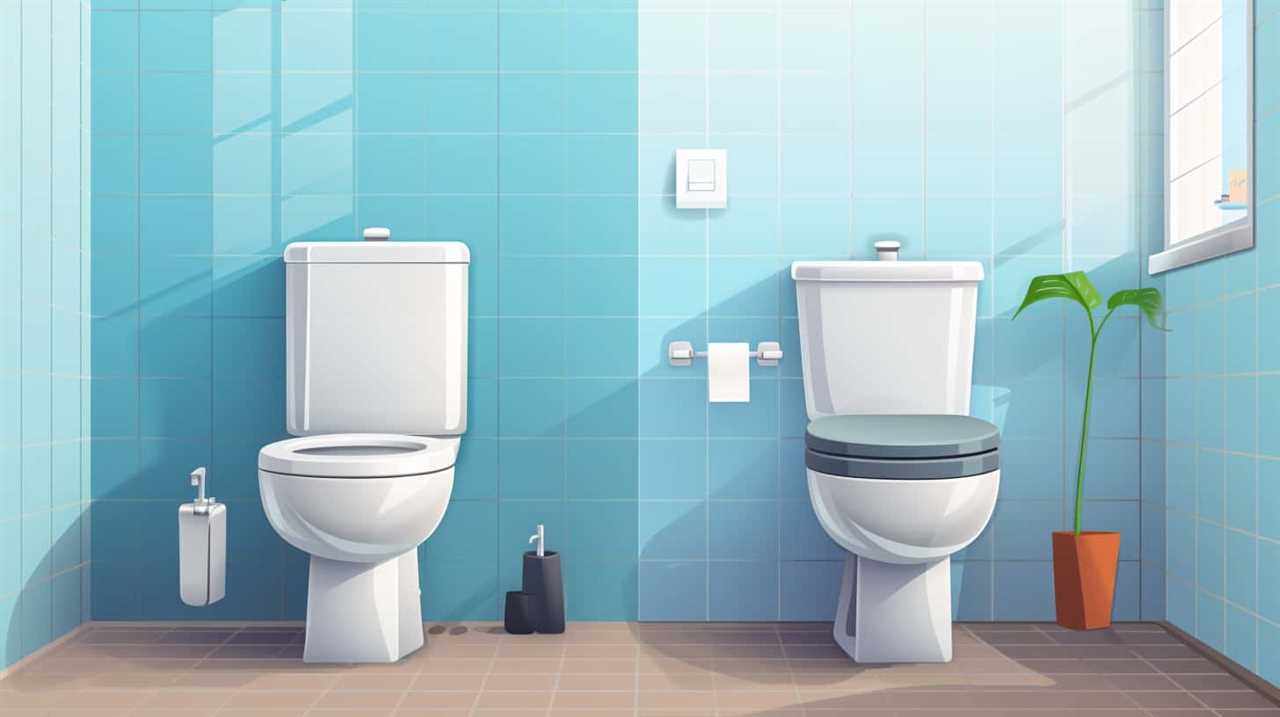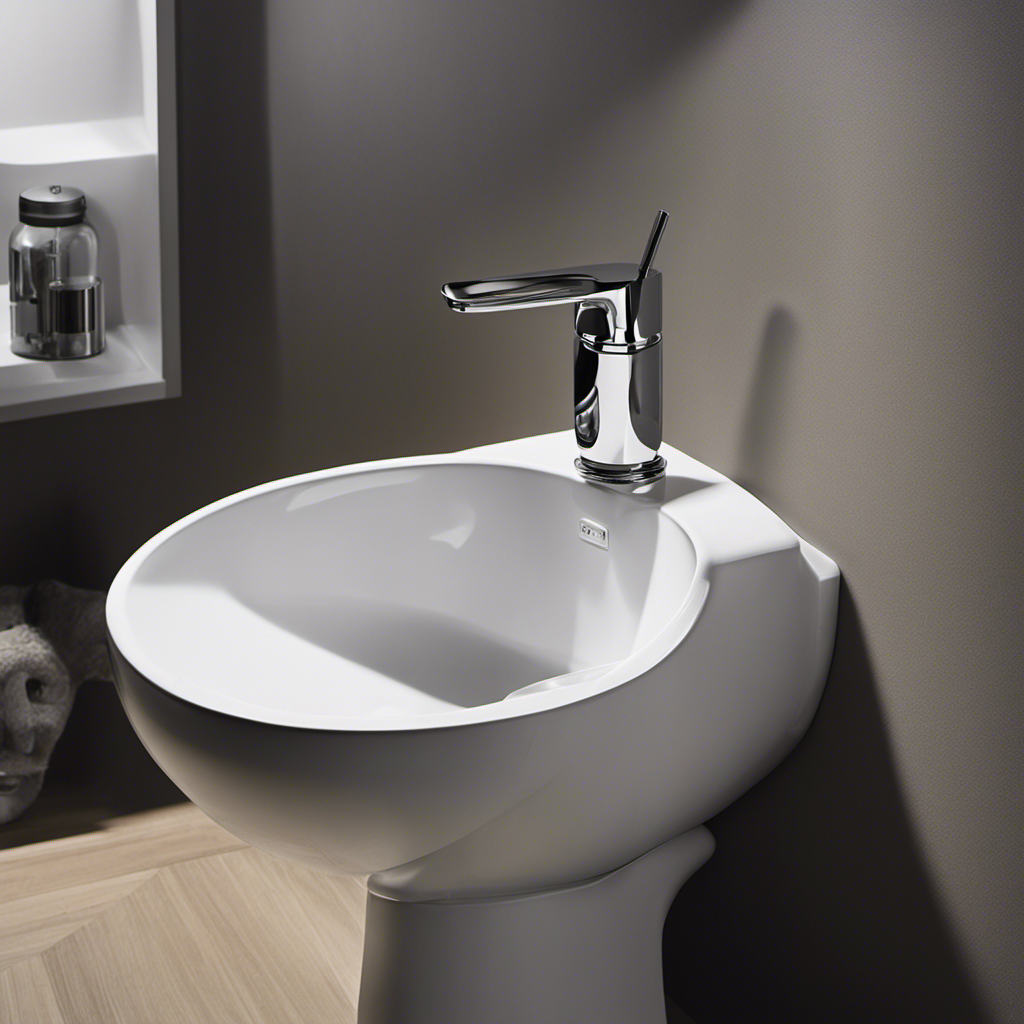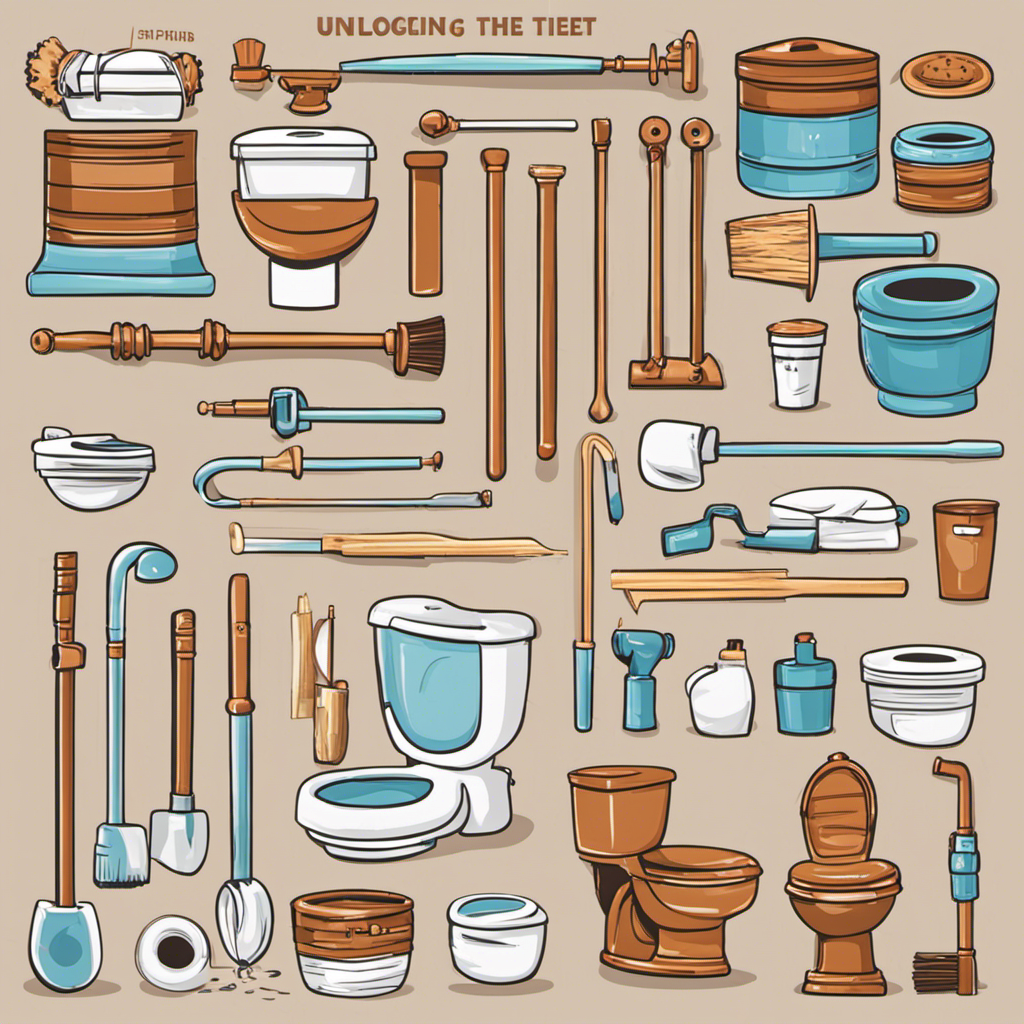As I stood in my bathroom, a persistent, gurgling sound echoed from the toilet tank. Determined to fix the issue, I embarked on a mission to remove the toilet fill valve.
In this article, I will guide you through the step-by-step process of this essential plumbing task. With just a few tools and a little know-how, you’ll be able to shut off the water supply, disconnect the water supply line, and successfully remove and clean the fill valve.
Let’s get started!
Key Takeaways
- The toilet fill valve controls the flow of water into the toilet tank.
- Troubleshooting common fill valve issues can help identify the problem before removal.
- Shutting off the water supply is essential before removing the fill valve.
- Cleaning the fill valve is essential to remove mineral deposits and debris that can cause malfunction.
Tools and Materials Needed
You’ll need a pair of pliers and an adjustable wrench to remove the toilet fill valve.
The toilet fill valve is responsible for controlling the flow of water into the toilet tank. If you’re experiencing issues with your toilet fill valve, such as constant running or low water pressure, it may be time for a replacement.
Troubleshooting toilet fill valve issues can help identify the problem, but sometimes, replacement is necessary.
To remove the fill valve, start by shutting off the water supply to the toilet. This can typically be done by turning the shut-off valve clockwise.
Once the water is off, use the pliers and wrench to disconnect the water supply line and remove the old fill valve.
Shutting off the Water Supply
To prevent any water flow, it’s important to shut off the water supply before starting the removal process. Regular maintenance for toilet fill valves is essential to ensure their proper functioning. Here are some common signs of a faulty toilet fill valve and how to troubleshoot them:
-
Constant running water: If you hear water continuously running into the toilet tank, it could indicate a problem with the fill valve. To troubleshoot, check if the float arm is properly adjusted or if the valve seal is worn out and needs replacement.
-
Weak water flow: If the water flow into the toilet tank is weak, it could be due to a clogged fill valve. In this case, you can try cleaning the valve by removing any debris or mineral buildup.
-
Overflowing toilet: If the toilet overflows even after flushing, it could be a sign of a faulty fill valve. To troubleshoot, check if the valve is closing properly or if the water level in the tank is set too high.
By properly maintaining and troubleshooting your toilet fill valve, you can prevent water wastage and ensure its optimal performance.
Now, let’s move on to the next step: disconnecting the water supply line.
Disconnecting the Water Supply Line
First, make sure the water supply is shut off completely before disconnecting the water supply line. To replace a toilet seat or fix a leaking toilet, it’s important to disconnect the water supply line from the tank. This step ensures that no water will flow while you work on the toilet. Here is a simple step-by-step guide on how to disconnect the water supply line:
| Step | Instructions |
|---|---|
| 1. | Turn off the water supply valve by turning it clockwise. |
| 2. | Flush the toilet to drain the water from the tank. |
| 3. | Use an adjustable wrench to loosen the nuts connecting the water supply line to the bottom of the toilet tank. |
Once you have disconnected the water supply line, you can move on to the next step of removing the fill valve. It is important to follow these steps to ensure a smooth and efficient process.
Removing the Fill Valve
Once the water supply line is disconnected, you can proceed with the next step of removing the fill valve. Removing the fill valve is a straightforward process that requires a few simple steps. Here’s what you need to do:
-
Locate the fill valve: The fill valve is usually located on the left side of the toilet tank. It is connected to the water supply line and has a float attached to it.
-
Disconnect the water supply line: Use an adjustable wrench to loosen the nut connecting the water supply line to the fill valve. Once the nut is loose, you can remove the water supply line from the fill valve.
-
Remove the fill valve: There are usually two nuts holding the fill valve in place. Use an adjustable wrench to loosen and remove these nuts. Once the nuts are removed, you can lift the fill valve out of the toilet tank.
Cleaning and Replacing the Fill Valve
Make sure you clean and replace the fill valve properly to ensure the efficient functioning of your toilet. Proper maintenance of toilet fill valves is essential for avoiding any potential issues and keeping your toilet in good working condition.
Over time, mineral deposits and debris can accumulate in the fill valve, causing it to malfunction. To clean the fill valve, turn off the water supply and flush the toilet to drain the tank. Then, detach the water supply line and unscrew the fill valve from the bottom of the tank. Use a brush or a cloth to remove any buildup and rinse it thoroughly.
If the fill valve is damaged or not working properly, it’s important to replace it with a new one. Troubleshooting common issues with toilet fill valves, such as running water or low water levels, often requires cleaning or replacing the fill valve.
Conclusion
So there you have it, folks! Removing a toilet fill valve may seem like a daunting task, but with the right tools and a little know-how, it can be a breeze.
Just remember to shut off the water supply, disconnect the water supply line, and carefully remove the fill valve.
Don’t forget to clean and replace the fill valve for optimal performance.
Now you can confidently tackle this DIY project and become the ultimate toilet repair expert.
Happy fixing!
